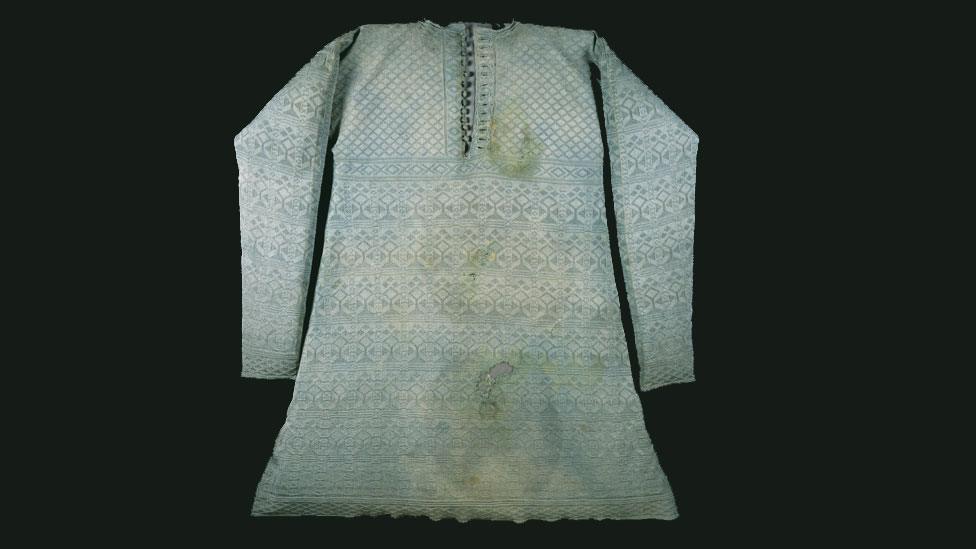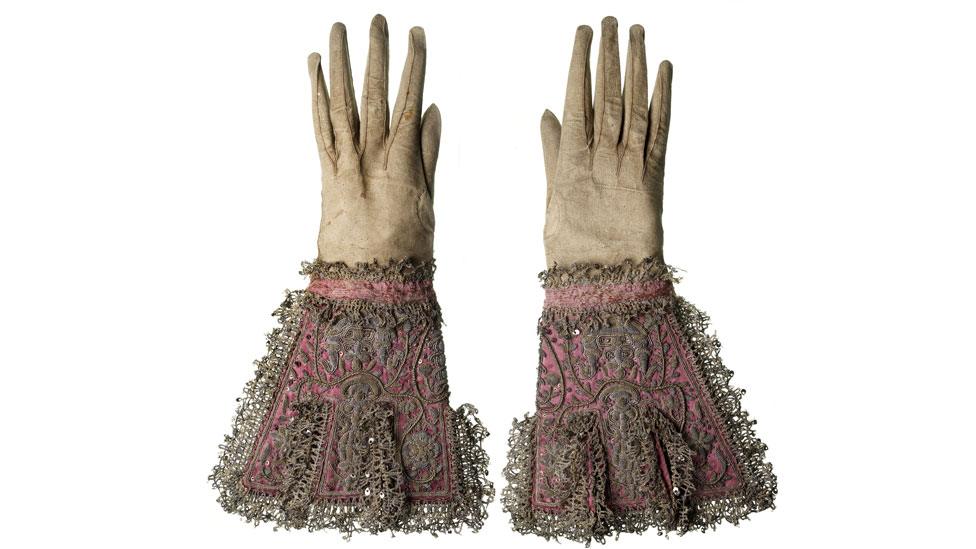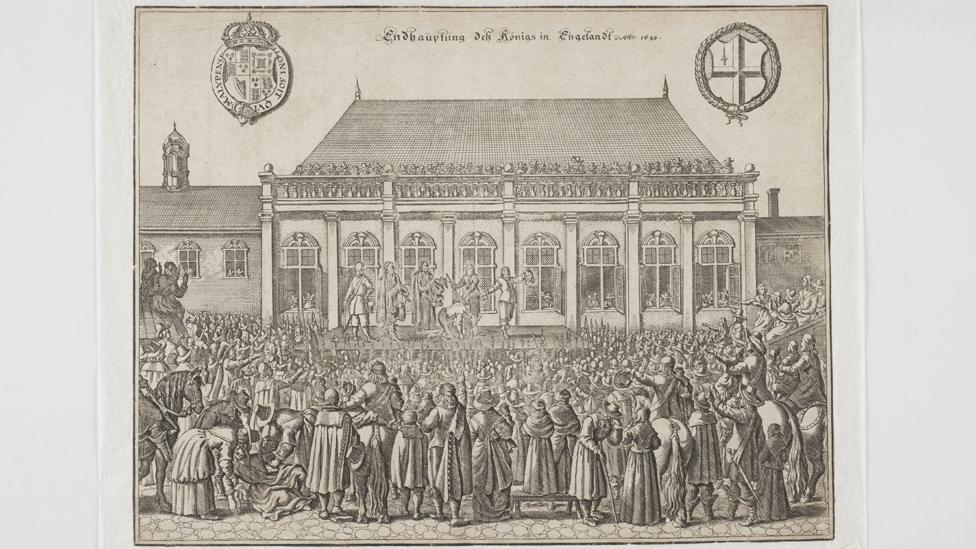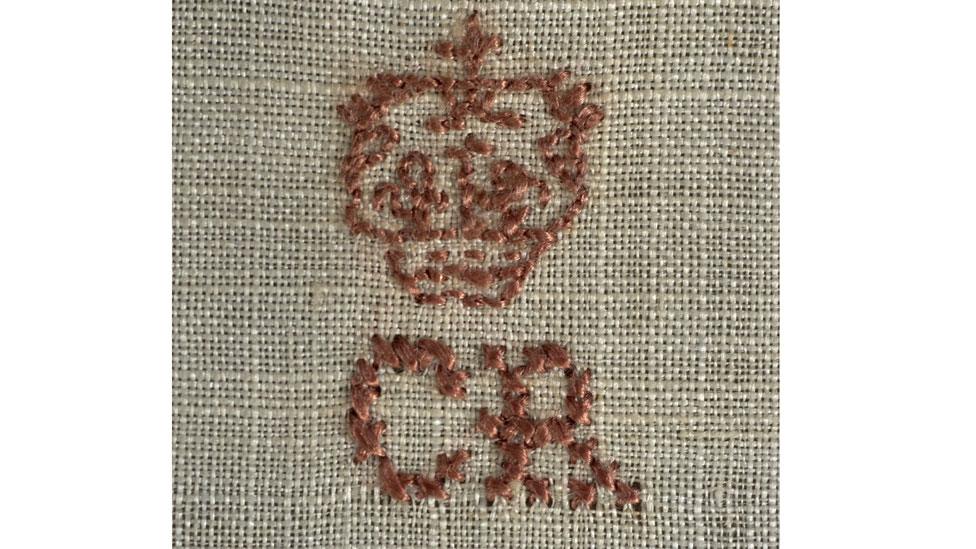Vest worn by Charles I at execution to be shown
- Published

The vest, not usually on public view, was worn as an extra layer of warmth at the king's execution
The silk vest worn by King Charles I when he was beheaded, in 1649, is going to be put on public view for the first time in a decade.
The Museum of London usually keeps the fragile garment under "restricted access", last exhibiting it in 2009.
The blue vest, along with other items worn by the king at his death, will be shown in an exhibition in the autumn.
Museum curator Meriel Jeater said the objects would help tell the story of "one of the most infamous executions".
Thursday 30 January is the 371st anniversary of Charles I's execution, at the Banqueting House on Whitehall.
After defeat in the Civil War, he had been found guilty of treason and was beheaded by masked executioners on a black-draped scaffold in front of a large crowd.

The gloves worn by Charles I on the winter day he was executed will also be on show
It was claimed the king asked to put on warm clothing so he would not shiver with the cold and look as though he was afraid.
The vest is believed to have been kept by a physician at the scene of the execution and was given to the Museum of London in 1925.
It would have been a layer worn over a shirt, but under outer clothes, and would have provided the extra warmth wanted by the king.
It has several stains, which the museum curators believe to have come from "body fluids" such as "sweat or vomit".

Charles was beheaded on a scaffold outside the Banqueting House
Tests in 1959 and 1989 to discover the precise nature of the stains were inconclusive, the museum says.
Any further tests would risk damaging the fabric "beyond repair", say curators.
Also in the October exhibition will be gloves, a scarf and a monogrammed handkerchief, believed to have been carried by the king on the morning of his death.
He had been declared guilty three days earlier and spent his last days at St James's Palace with his children and his chaplain.

A monogrammed handkerchief carried by Charles I will be part of the exhibition
On the morning of his execution, he walked across St James's Park to Whitehall, wrapped in a dark cloak.
Fragments of a black cloak will also be part of the exhibition.
Ms Jeater said the exhibition would cover the "grim but fascinating" history of public executions in London, which "attracted huge crowds several times a year at locations across the capital".
"Public executions became embedded in the landscape and culture of London, influencing people's everyday lives," she said.